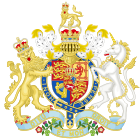Scottish Reform Act 1832 facts for kids
| Act of Parliament | |

|
|
| Long title | An act to amend the Representation of the People in Scotland. |
|---|---|
| Citation | 2 & 3 Will. 4. c. 65 |
| Introduced by | John Russell, 1st Earl Russell (Commons) |
The Scottish Reform Act 1832 was an important law passed in Scotland in 1832. It made big changes to how people voted for their representatives in the UK Parliament. This Act was similar to another law passed for England and Wales around the same time.
Before this Act, very few people in Scotland could vote. Only about 0.2% of the population had a say! After the Act, this number jumped a lot. It went from about 5,000 voters to 65,000 voters. This meant that about 13% of adult men could now vote. It was no longer just for a few very rich families.
The main people who helped create this Act were Francis Jeffrey and Henry Cockburn. Its official name was the Representation of the People (Scotland) Act 1832.
Contents
What Changed with the Scottish Reform Act?
This Act brought many important changes to elections in Scotland. It made the voting system much fairer.
More Voters Could Participate
One of the biggest changes was how many people could vote. Before 1832, only about 5,000 men could vote in Scotland. This was a tiny number compared to the total population of 2.3 million people.
After the Act, the number of voters grew a lot. It reached 65,000 people! This meant that more ordinary people, like householders and property owners, could now vote.
How Counties Elected MPs
The Act changed how Scottish counties chose their Members of Parliament (MPs). Generally, each county still elected one MP.
- Before the Act, six smaller counties took turns electing an MP. This meant they only had an MP in every other Parliament.
- The Act ended this system. For example, Clackmannanshire and Kinross-shire became one voting area.
- Buteshire and Caithness-shire each got their own MP for every Parliament.
How Burghs Elected MPs
The Act also changed how burghs (towns and cities) elected their MPs.
- Big cities like Edinburgh and Glasgow now had two MPs each.
- Other important towns like Aberdeen, Dundee, Greenock, Paisley, and Perth each got one MP.
- Smaller burghs continued to group together in "districts" to elect 18 MPs. But the way they voted changed. Before, representatives from each burgh would meet to choose the MP. After the Act, individual votes from all burghs in a district were added up.
Impact of the Reform Act
The Scottish Reform Act had a huge impact. It made the Scottish Parliament much more representative of its people.
- The number of Scottish MPs increased from 45 to 53.
- The right to vote (called the "franchise") expanded greatly. It now included householders who owned property worth £10 in towns. In the countryside, it included property owners worth £10 or tenants who paid £50 in rent.
This Act was a big step towards a more democratic Scotland.
See also
- Reform Acts
- Representation of the People Act

